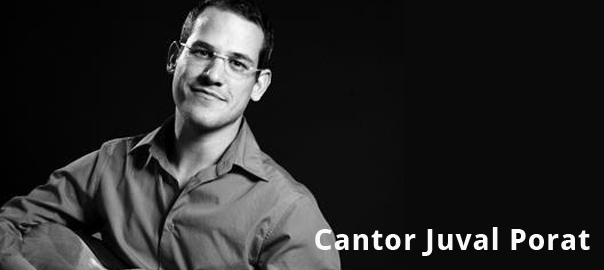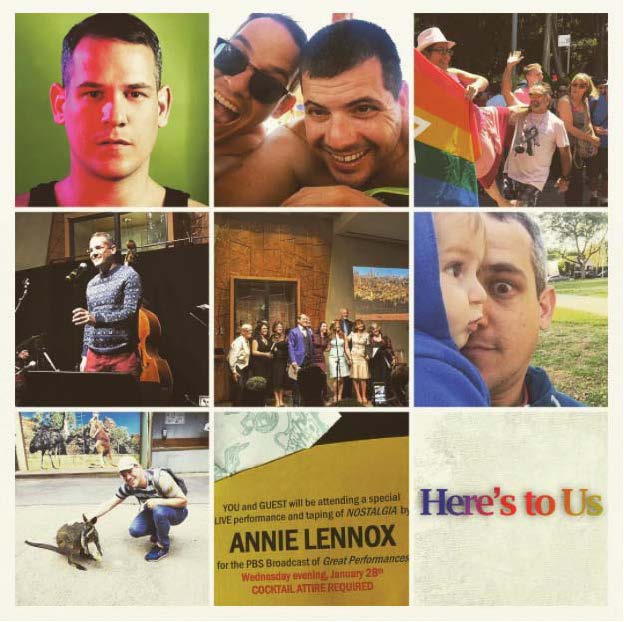Thoughts on Purim and Yom Ki-Purim

Last Erev Yom Kippur occurred exactly on the first of the last 100 remaining days of 2015. I remember this because I got an email on that day titled “Can you be happy for the last 100 days of 2015?” from 100happydays – a Non-Profit Foundation “on the mission to make the world happier.” I was invited to participate in a 100 day long challenge, in which I’d take a daily picture of what made me happy, as a ritual to help cultivate daily moments of happiness. I thought it might be a nice experiment, especially starting on the eve of Yom Kippur, and so I accepted the challenge.

My work makes me happy #100HappyDays #Day1
On the night of Kol Nidrei I took a picture of my guitar, my book of music/prayers and a key given out during Rabbi Lisa’s sermon, and I named the image “my work makes me happy,” a feeling that felt profoundly true on that particular night. My last day of the challenge contained a small collage images depicting some of what happened over the year and I gave it the title “Opportunities make me happy.” In between those days I posted all kinds of images, which you can see on my website.
On day 100 I found myself glancing at the list of happy moments with awe and appreciation, as I waved my goodbyes to them and moved on to days with plenty of undocumented happy moments. Then the arrival of the Jewish month of Adar in mid-February 2016 brought the list back into my mind – after all, we read in the Talmud (Taanit 29): “Mishenichnas Adar Marbim B’Simcha” – When the month of Adar arrives we should increase our joy, or “joy is increased”. Apart from the joyous holiday of Purim, there is no tradition as to how the increase of joy is to be manifested. Maybe, I thought to myself, my 100 daily documented joybringers would inspire others to find their sources of joy for themselves!
On a deeper level, my 100 happy days allowed me to once more look at the connection between Yom Kippur and Purim. It has always fascinated me that
Yom Kippurim (Day of Atonements) could also be read as Yom Ki-Purim (A day similar to Purim). We find a number of sources that suggest that there’s some further connection to be made between those two holidays.

Opportunities make me happy. #100happydays #day100
“What was the good name that [Esther] earned for herself? That all the festivals may be nullified, but the days of Purim will never be nullified… Rabbi Eliezer says, Yom Kippur, too, will not be nullified. (Midrash – Yalkut Shimoni, Esther 944) In addition to the scroll of Esther being the only scroll, apart from the Torah, that has its own blessing prior to reading it, or the fact that is written on a scroll just like the Torah, in Maimonides’ book Mishneh Torah, we read that “all the books of the Prophets and all the Writings will be annulled in the days of the Messiah, apart from Megillat Esther [the scroll of Esther]. It will continue to be binding like the Five Books of Moses and the entire Oral Law which will never be invalidated. Even though all memory of our suffering will be erased…still the days of Purim will not be annulled.” (Mishneh Torah, Scroll of Esther and Hanukkah 2:18)
One might wonder how Purim, a holiday of joy and laughter, drinking, silliness and drag accompanied by a reading of a scroll filled with intrigue and feasts and devoid of any mention of God or any commandments could possibly compare with Yom Kippur, one of the most sacred holidays in the Jewish year, dedicated to self reflection and introspection. The Jerusalem Talmud even goes as far to suggest that the story of Esther was given to
Moses on mount Sinai (PT Megilah 70d)! Seemingly, it’s a paradox and though I love to leave questions open for interpretation, allow me to suggest an answer. Perhaps Purim as a holiday and Purim as a story complements Yom Kippur and the Torah as another dimension in which God is revealed to us.
If God were only manifest in smoke, lightning and visible sounds, as described in the Torah, would that be complete? Can there be another dimension of divine revelation that is subtler, complementing the perception of God in the Torah? Perhaps a divine revelation that hides itself and requires effort to be discovered, like the one in the Purim storyline, is the additional dimension needed to balance out the Torah’s perception of God?
Can the same apply to our effort in finding new appreciation of our relationship with the universe on Yom Kippur through fasting and praying? Would that kind of practice be complete without the other aspect of the physical celebration, the joyous drinking we’re commanded to practice during Purim and the dressing up?
If we look closely, we might notice that Purim isn’t just about the satisfaction of the physical desires of the body and the cheerfulness, as it contains the instruction to pay close attention to the chanting of the Megillah. It asks us to deepen our awareness and sense of purpose in the world by utilizing both our bodies and minds, whereas on Yom Kippur we focus solely on our minds or souls, while trying to annul our physical needs.
Perhaps this is why Yom Kippur can be read as a day that’s similar to Purim, though not quite as complete as Purim!
The story of Purim, in a way, gives us permission to interpret reality, to act in it and to discover God wherever God hides, without special effects or the voice of prophets or extraordinary miracles. Human needs like celebration and bodily indulgences receive a status of sacredness. It marks the beginning of a path, in which we are invited to find God in our lives, by ourselves – by feeling happy, by dancing and singing, by listening, by dressing up, or by searching for and documenting moments of joy in our everyday lives.
Happy Purim!
B’shalom,
Cantor Juval




